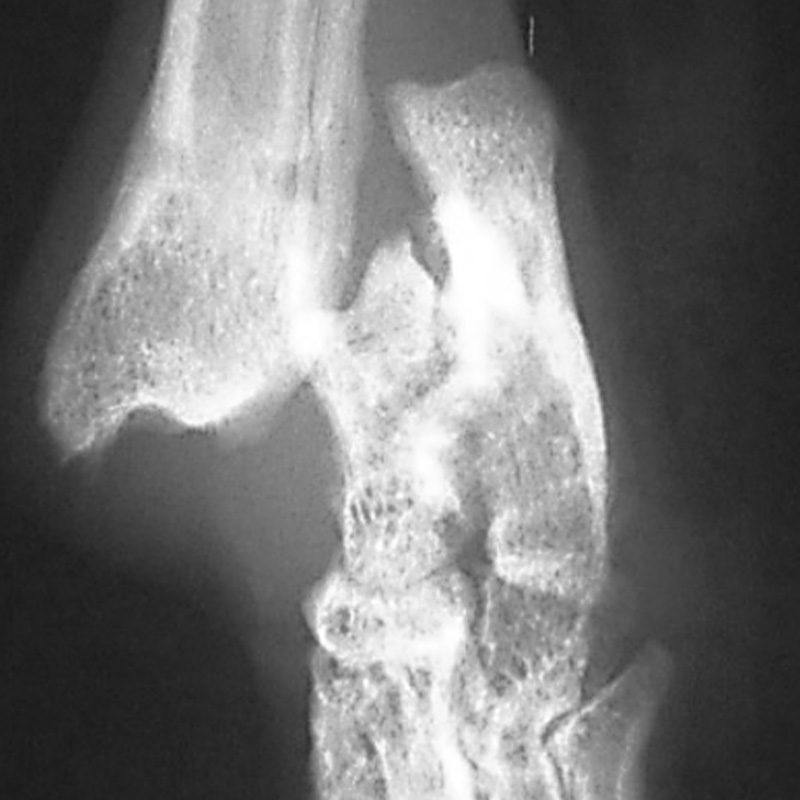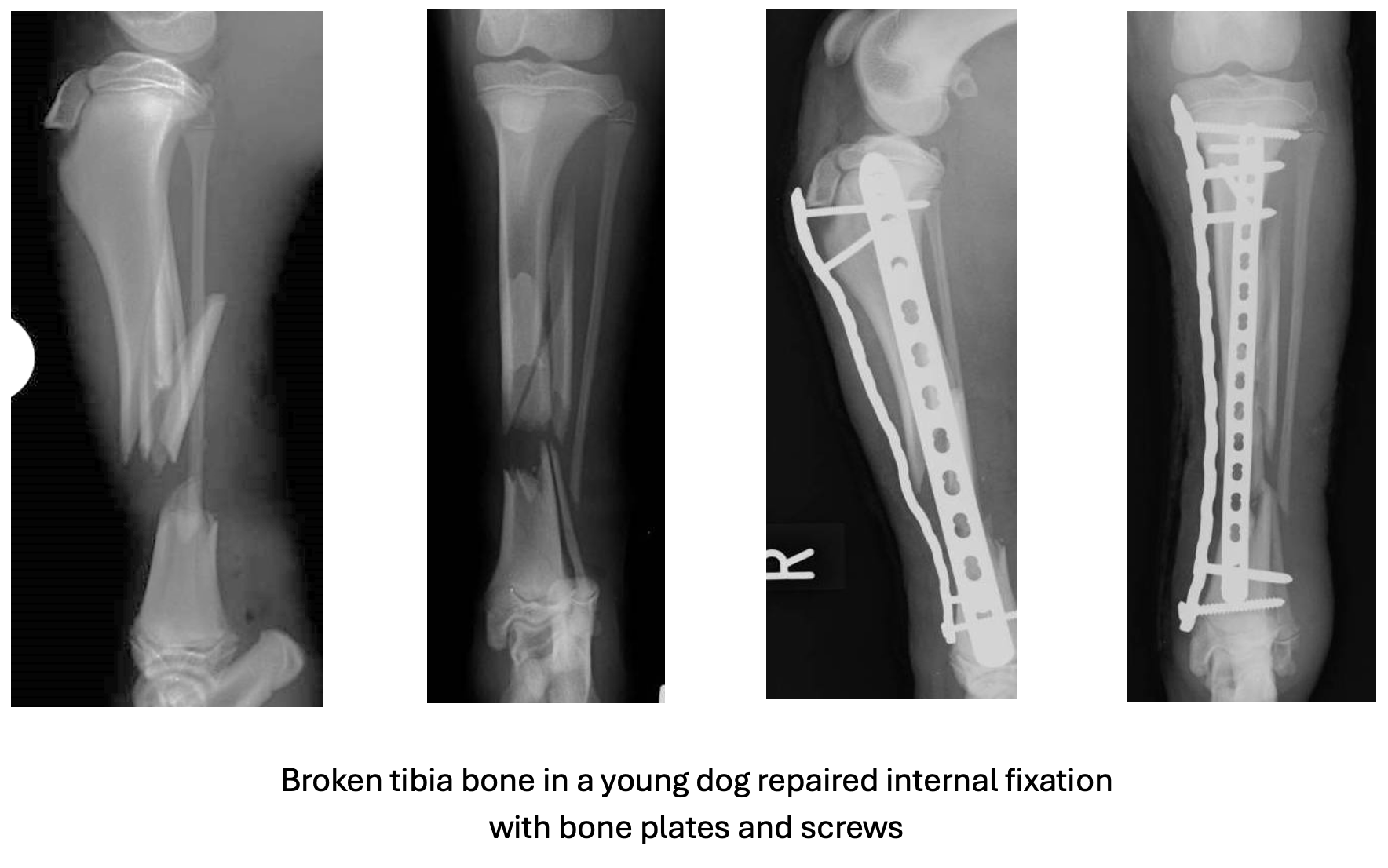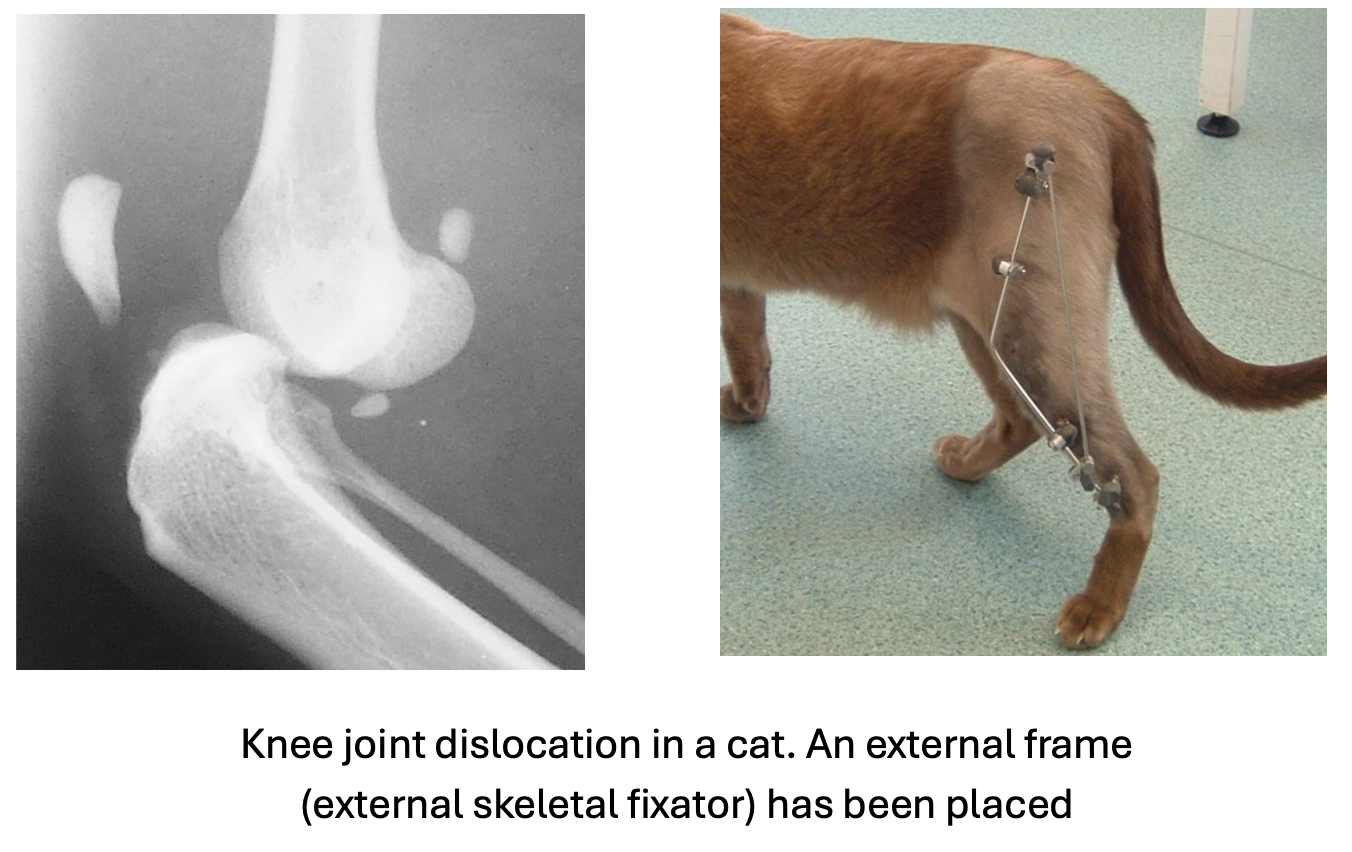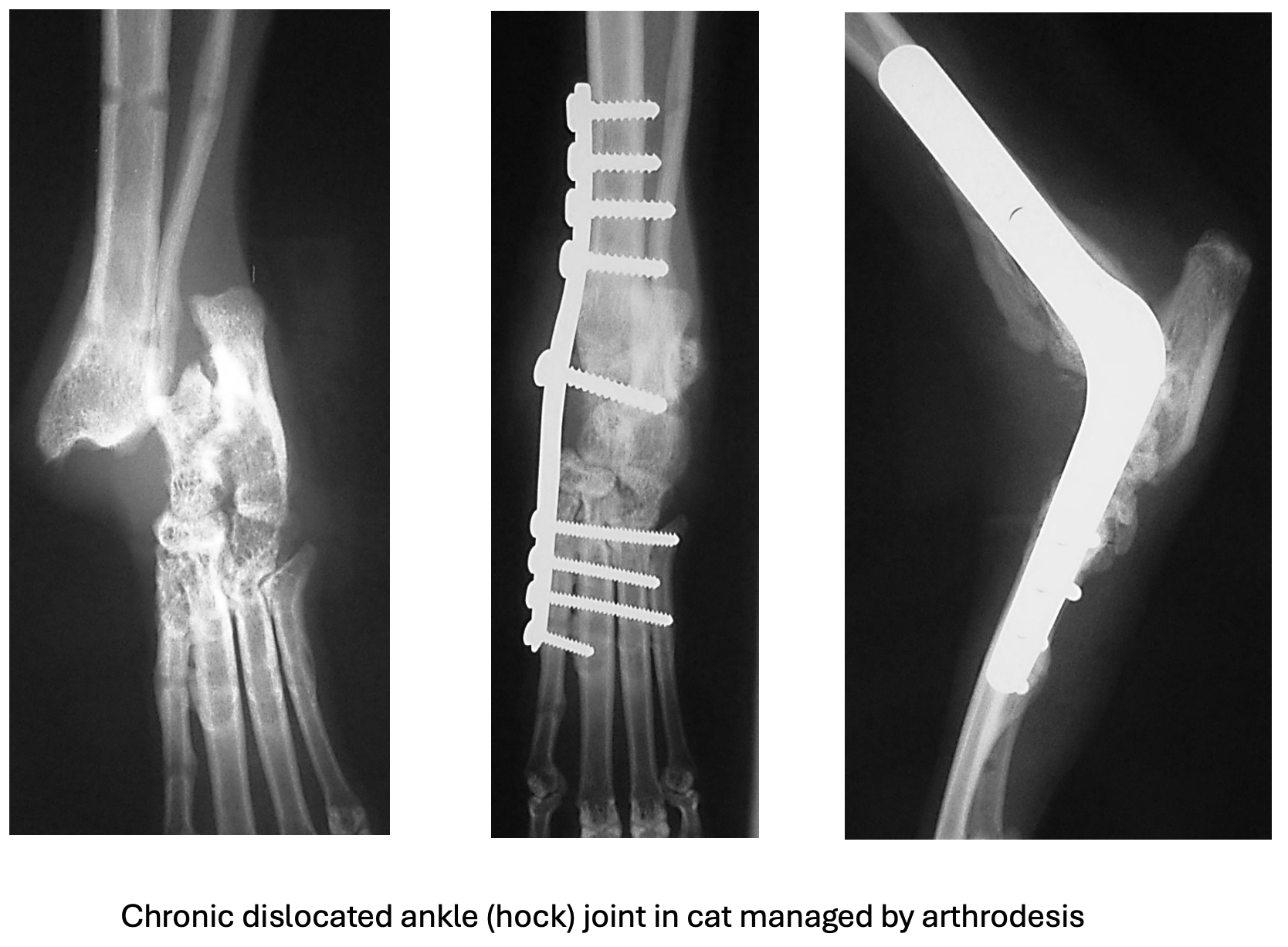Fractures and dislocations

Bone fracture and joint dislocation (luxation) are commonly encountered problems in both cats and dogs. Most occur because of external trauma e.g. motor vehicle injury and can be extremely painful and debilitating. Appropriate management of the fracture and / or dislocation is key to ensuring optimal recovery and restoring mobility to your pet.
How are fractures and dislocations diagnosed?
Most fractures will have been identified at your local veterinary clinic through a combination of physical examination and x-ray imaging. Once we have assessed your pet and reviewed your own vets’ x-rays, we may need to take some additional x-rays, or for some complex fractures, we may recommend performing a CT scan to better understand the injury, which can help us to plan appropriate management.
Depending on the nature of the trauma e.g. road traffic collision or a fall from a height, additional non-skeletal injuries may be present. Sometimes these additional injuries may present a serious risk to your pet’s health in comparison to their fracture or dislocation. The Ferguson Veterinary Clinic is not set-up to manage non-orthopaedic related conditions. As such if additional life-threatening injuries are present, we advise these patients are referred to a centre that can manage all aspects of their trauma.
How can fractures and dislocations be managed?
The goal of managing any fracture or joint dislocation is to achieve bone healing or joint stability to allow early restoration of limb function and patient mobility.
Fractures: a fracture management plan is created using information from the patient, x-rays and clinical features. This allows a bespoke management plan to be created for your pet’s fracture. The fractured bone must be stabilised to give it the opportunity to heal. In most patient’s stabilisation can be achieved by two means, internal or external fixation. Internal fixation uses metal plates, screws and pins placed directly onto or into the fractured bone. The soft tissues and skin then close over the implants, so nothing is visible externally. Unless indicated implants are not removed.
External fixation involves placement of pins through small holes in the skin into the bone. An external connecting bar and clamps are then used to secure all the pins to hold everything in position. Once the fracture has healed the external frame and bone pins are all removed.
For some patient’s non-surgical management of their fractured bone may be appropriate; this may require your pet to be strictly rested or perhaps have a split or cast applied. Although commonly used in people, casting or splinting fractured bones is rarely used in pets. It can be associated with a high rate of complications such as skin sores, dermatitis, and failure of the fractured bone to heal and a requirement for surgical intervention.

Joint dislocations: Joint dislocations may solely involve damage to the soft tissue supporting structures (ligaments and joint capsule), although for some the bone or joint surface may be damaged or the bone fractured as well. Management of any dislocation will be dictated by the severity of the injury and the joint which is involved. In most patient’s the dislocated joint will be repositioned whilst the patient is anaesthetised and stabilised; this will often involve surgical management. This is likely to involve placement of artificial ligament(s) and / or placement of a temporary external frame to protect the internal repair and temporarily immobilise the joint.

Non-surgical management may be appropriate in some patient’s and will likely require a period of cage rest +/- bandage support to allow the damaged soft-tissues to heal.
If the dislocated joint is severely damaged or already unhealthy (i.e. has pre-existing osteoarthritis) then trying to save the joint is unlikely to be effective, will lead to chronic pain and poor mobility. In such situations, for some joints, it is best to sacrifice the joint to save the function of the limb and ensure patient mobility. For example, diseased hip joints may be better undergoing replacement or femoral head and neck excision (see Hip Dysplasia page for more details), and injured ankle or wrist joints may be better managed by joint fusion (arthrodesis). See our arthrodesis page for more details).






